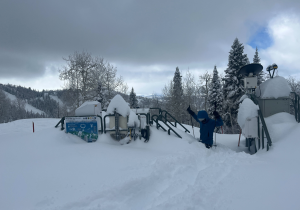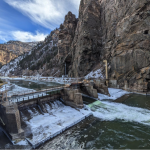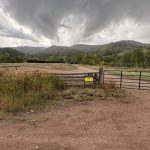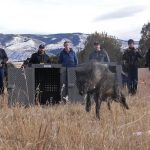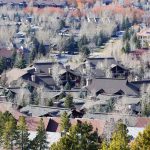Scientists study variability in snowfall, wetter snowpack
Climate models show Colorado ski season shortening by 10 days
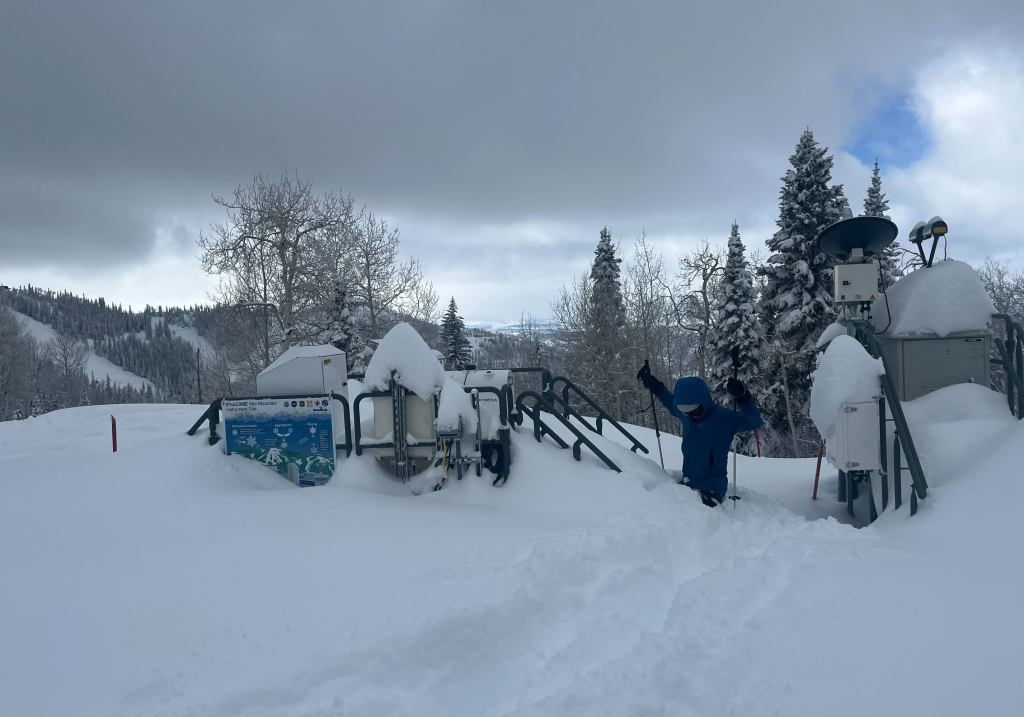
Storm Peak Laboratory/Courtesy photo
Changing snowpack trends in the West are bringing more variability to snow conditions and more moisture to the snowpack, threatening the future number of light and fluffy powder days.
Increasing variability was the predominant message from a panel of snow experts during the presentation “Stories of a Changing Snowpack” hosted by nonprofit Yampatika on Nov. 13 in Steamboat.
The panel, including representatives from the Storm Peak Laboratory and Airborne Snow Observatories, presented in-depth data and answered audience questions about how changing weather and climate conditions are affecting snowfall and snowpack impact to recreation and water supplies in northwest Colorado.
“We are seeing earlier snowmelts, heavier snow, more variability,” said Atmospheric Science Professor Gannet Hallar, Ph.D., who directs the Storm Peak Lab which sits atop the Steamboat Resort.
Hallar said across the Western states, scientists are confirming decreases in snow-water equivalent, according to measurements taken April 1, increasing spring temperatures and dust — factors that cause snow to melt. She explained the snowflake formation science behind how even small increases in winter temperatures can make a large difference in snow quality.
“There was an assimilation of 13 climate models, and it really did show that probably the core number of ski days in resorts in Colorado would decrease by about 10 days in the next several decades, and that’s really due to these changing temperatures and changing snowpack,” Hallar said, “In the springtime we have this combination of warmer temperatures, but also dust is highly absorbing and it melts the snow faster. So that also changes your snow pack really quickly toward the end of the season.”
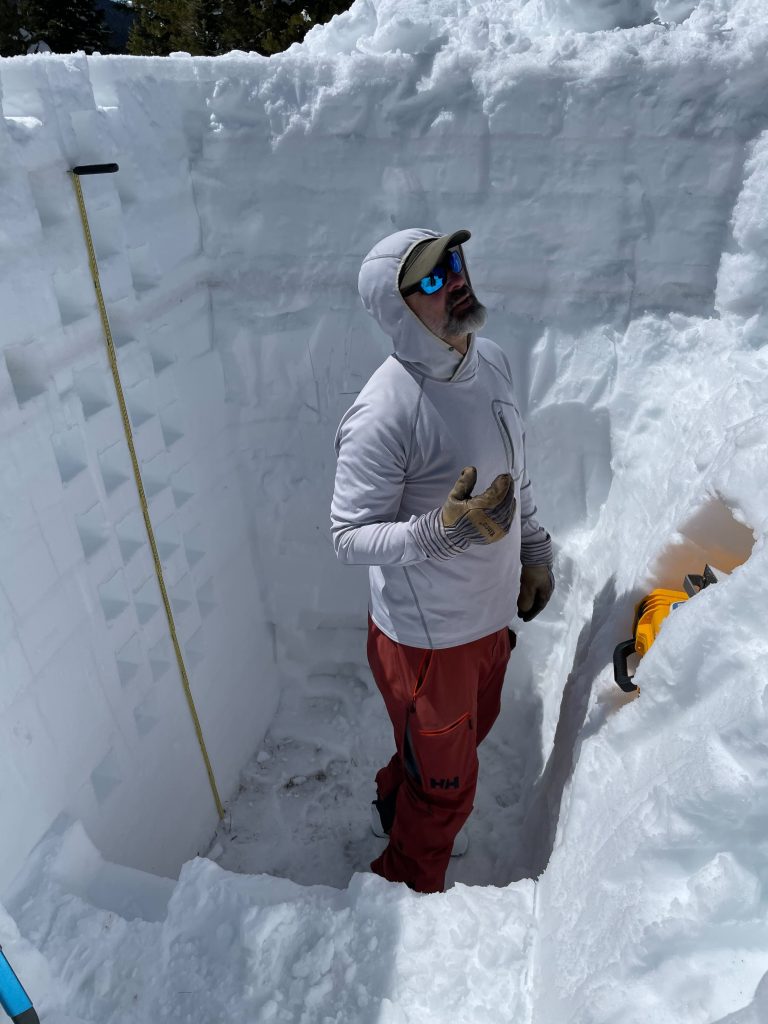
Dan Gilchrist, atmospheric scientist at Storm Peak Lab, talked about how the winter recreation seasons are “coming in later and ending sooner especially here or at lower elevations.”
“We are getting more moisture in the snowpack. We have wet storms,” Gilchrist said. “I think we just have to adapt to what we get. We need to dive deeper into how it’s going to affect us five to 10 years from now.”
“I think we might have to accept a shorter seasons for the most part, or lend ourselves to recreating at higher elevations,” Gilchrist said.
Yampatika Executive Director Kristen Jespersen opened the evening program by noting that the educational story of a changing snowpack is about adapting and adjusting to varying conditions due to “shifting timelines for when snow falls and more aggressive seasonal patterns.”
Kate Burchenal from Airborne Snow Observatories, which has been conducting LIDAR and spectrometer sensing flights in the Yampa Valley for the past two years, works with the team that uses the snowpack depth and water content data recorded during those flights to model and forecast for spring runoff to assist water managers.
“With less snowpack, obviously you assume less runoff, and what is also difficult is knowing the timing of when that is going to come down,” Burchenal said.
Earlier spring runoff, hydrograph changes and increased variability of snowpack creates challenges for everything from sufficient river flows for endangered fish species to the timing of reservoir releases to agricultural irrigation, Burchenal said.
Hallar said dust on snow measurements and understanding how dust on snow impacts melt timing is important because some scientists have documented that a large dust storm may lead to a 10- to 14-day earlier snow melt off.
“Across the entire Western United States, we are not necessarily seeing more dust,” Hallar explained. “We are understanding a lot better how dusts lands on snow and changes the melt rate of that snow. …This dust is really important to water managers.”
Audience member Doug Allen, retired from mountain operations at Steamboat Resort, moved the conversation to how snow making technology is being utilized to help open ski seasons earlier.
“Snowmaking is one of the ways that we as resorts can bring this gap, guarantee early openings,” Allen said. “Before 1980, you might get Steamboat open the 17th of December maybe, maybe. Snowmaking guaranteed a Thanksgiving opening, pretty much. It changed the industry.”
One improvement in snowmaking comes by placing snow nozzles at 20 feet or higher to allow more time for the water to freeze before it hits the ground, Allen said.
Allen and Hallar discussed the value of snowmaking additives such as Snomax, made from a protein derived from a naturally occurring microbe, used to provide nuclei for artificial snow making.
“This allows more significant volumes of snow to be produced at lower temperatures, with less water and energy.” according to the website for Snomax International. “This substantially increases the efficiency of the snow-making system, while at the same time delivering a consistent snow quality even during the most extreme temperature fluctuations.”
Hallar said many people in the university community are working on new ice nuclei technology.
“There are more effective ones coming, a lot of biotech working on that,” Hallar said. “For the recreation industry, snow making has been a game changer and will continue to be a game changer. Unfortunately, it won’t be a game changer for getting water into the Colorado River and making sure all the people downstream have water. So, from that perspective, you really have to plan your water very, very carefully.”
Another scientist contributing to the presentation was Brian Lazar, deputy director of the Colorado Avalanche Information Center, who was featured in the climate ski film “On Thin Snow” by Jonah Steinberg, which was viewed by the audience. Lazar explained how climate change is impacting avalanche danger.
“What we are starting to see is wet avalanche activity and warm wet storms creep more into the middle of winter than you would have seen out here 20 years ago,” Lazar noted in the film. “We didn’t really have to worry about wet avalanche activity much in December, January and February in Colorado because we’re an interior, high elevation fairly cold climate, but those days are gone…. So, we see these mid-winter warmups, which are more pronounced than we used to see a couple of decades ago.”
“We are going to see more and more weather events that we have not seen in the past that we can’t draw on historical analogs to help us predict,” Lazar said. “As the climate becomes more variable over time, the chances of actually seeing an average year goes down.”
To reach Suzie Romig, call 970-871-4205 or email sromig@SteamboatPilot.com.

Support Local Journalism

Support Local Journalism
Readers around Steamboat and Routt County make the Steamboat Pilot & Today’s work possible. Your financial contribution supports our efforts to deliver quality, locally relevant journalism.
Now more than ever, your support is critical to help us keep our community informed about the evolving coronavirus pandemic and the impact it is having locally. Every contribution, however large or small, will make a difference.
Each donation will be used exclusively for the development and creation of increased news coverage.

